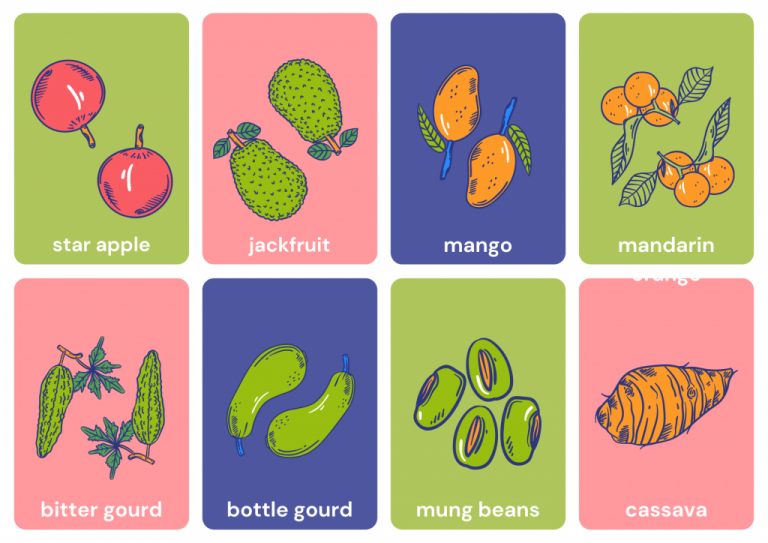
Introduction
When it comes to tropical fruits and vegetables, the vibrant flavors and nutritional benefits they offer have long captivated people around the world. This article discusses the wonders of fruits (6): star apples, jackfruits, mangoes, mandarins, bitter gourds, bottle gourds, mung beans, and cassava. It also showcases the importance and delights of these fruits bestowed upon us by nature. So stay tuned.
Star Apples
Star apples have striking purple or green exteriors. They are tropical fruits that surprise us with their creamy, juicy flesh. Cut open a star apple, and you will find a star-shaped pattern in the center that gives it its name. Star apples possess a subtly sweet taste reminiscent of grapes and a smooth texture. They are a refreshing treat to enjoy on a hot day.
Jackfruits
Jackfruits are known as the largest tree fruit in the world. They are a tropical wonder with incredible versatility. With a fibrous and sweet flesh, jackfruits are enjoyed both ripe and unripe. When ripe, the golden-yellow segments are juicy and aromatic, while unripe jackfruits are used as a meat substitute due to their meaty texture. Jackfruits are not only delicious but also rich in nutrients and fiber.
Mangoes
As the “king of fruits,” mangoes are adored for their luscious sweetness and tropical aroma. With a range of varieties, mangoes offer a diverse flavor profile, from tangy and slightly sour to exceptionally sweet. They are rich in vitamins, minerals, and antioxidants. Mangoes are not only a delicious fruit but also a nutritious addition to any diet.
Mandarins
Mandarins have a bright orange hue and easy-to-peel skin. They are a beloved citrus fruit enjoyed during the winter months. They are known for their sweet and tangy flavor. These miniature fruits are full of vitamin C and other essential nutrients. Whether consumed fresh, juiced or added to salads or desserts, mandarins bring a burst of sunshine to any dish.
Bitter Gourds
Bitter gourds, also known as bitter melons, have a unique and acquired taste. Despite their bitter flavor, they are revered for their numerous health benefits, including regulating blood sugar levels and aiding digestion. Bitter gourds are often used in traditional Asian cuisine, where their distinct taste adds depth and complexity to stir-fries, curries, and soups.
Bottle Gourds
Bottle gourds have an elongated shape and pale green skin. They belong to the squash family and are prized for their mild flavor and versatility. With a high water content, bottle gourds are often used in refreshing beverages and soups. They can also be cooked into curries or stir-fries, adding a delicate crunch and subtle taste to dishes.
Mung Beans
As a type of legume, Mung beans are a staple in many Asian cuisines. These small, green beans are not only easy to cook but also highly nutritious. They are full of fiber, protein, and essential vitamins and minerals. They are also a popular ingredient in soups, stews, salads, and desserts. In addition, they are commonly sprouted and used as a crunchy topping or filling in various dishes.
Cassava
Cassava is a starchy root vegetable. It is a staple in many tropical countries. With a neutral taste and a texture similar to potatoes, cassava can be boiled, fried, or mashed. It is a versatile ingredient used in both sweet and savory dishes. Cassava is also a valuable source of carbohydrates and provides important nutrients in regions where it is a dietary staple.
Conclusion
The above article has been devoted to discussing “Fruits (6): Star Apples, Jackfruits, Mangoes, Mandarins, Bitter Gourds, Bottle Gourds, Mung Beans, and Cassava”. These tropical fruits offer a diverse range of culinary experiences. Whether enjoyed raw, cooked, or incorporated into various dishes, they not only tantalize our taste buds but also provide an abundance of nutrients and health benefits.






